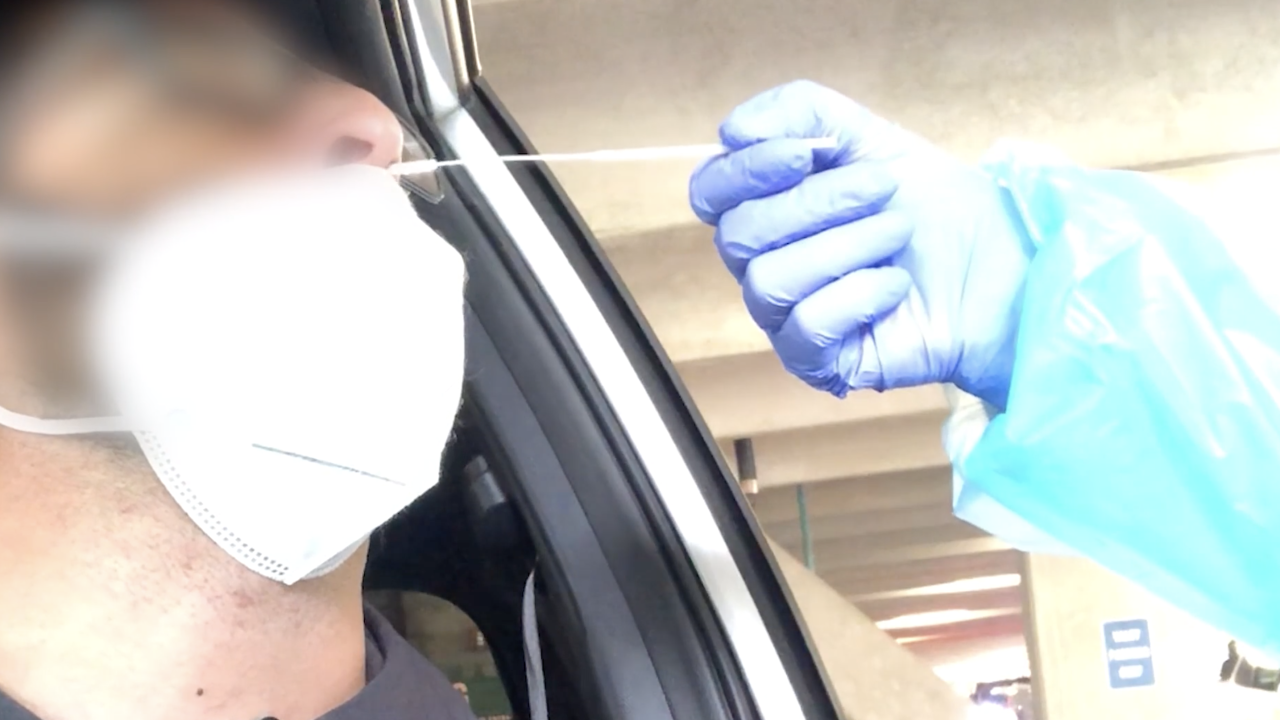There are different kinds of COVID-19 tests including antigen tests, PCR and nucleic acid tests, and antibody tests.
At Pacific Diagnostic Laboratories, they showed the KSBY team different rapid antigen tests, which use nasal swabs.
Joe Hicks, a Point of Care Testing Analyst at Pacific Diagnostic Laboratories, said of the different testing times: “Our ID NOW is about ten minutes, our Lumira antigen is 12 minutes, and then our BinaxNOW cards are 15 minutes.”
Antigen tests can be done at doctors’ offices, urgent cares, or at home. The Binax cards are similar to the tests purchased at a pharmacy.
PCR tests take longer to process, with results taking hours or even days. However, the tests are more sensitive.
PCR tests can be rapid or extended, which means a lab is required to process the results. These tests can take either nasal swabs or saliva samples.
The ID NOW test is the one Pacific Diagnostic Laboratories use in emergency departments and urgent cares.
Garrett Gonzalez, a Clinical Lab Scientist, demonstrated a machine that is used in PCR as well as nucleic acid tests. “This has a higher sensitivity as 95% sensitivity as opposed to the rapid tests. It's about 70% sensitivity," said Gonzalez.
The lab can run through about 2,000 samples a day.
There are also antibody tests, which detect previous COVID infections or vaccination.
Antibodies are proteins created after infection to fight future infections.
Dr. Stewart Comer, the Laboratory Director and Senior Pathologist at Pacific Diagnostic Laboratories Cottage Health as well as Laboratory Director for the Santa Barbara County Public Health Laboratory, explained: “The FDA is very clear that no one can say if you’re immune or not immune, but if we test you at different junctures, we can tell you that you have a certain value of an antibody.”
Antibody counts go down each month after a COVID-19 infection or vaccination.
“The reason why they're instituting the booster is because many people after about six months, seven months basically get almost the same as somebody who's never been vaccinated or ever been infected by SARS-COV-2,” said Dr. Comer.
Pacific Diagnostic Laboratories works with Santa Barbara County and UC Santa Barbara on testing for COVID-19.
Scientists here send samples to UC Santa Barbara to identify the dominant strain of COVID-19, and they do this to help direct the county on what medications would be the most effective.
Jane Choe, a Clinical Lab Scientist, said “Previously it was delta, delta had its own regimen of drugs that we could use. We are now on the omicron strain, which we know has an even less effective number of drugs that are useful for it.”
The lab takes a small portion of their positive tests—often choosing some of the sample based on proximity—and sends the anonymous data to UC Santa Barbara.
“Some of the things that we are focusing on are our employees who may have been in contact with other patients. Patients who have been previously vaccinated. And or boosted who are now breaking through, obviously also patients who are inpatients so that we can guide their physician's therapy better,” Choe said.
Pacific Diagnostic Laboratories showed KSBY a chemistry analyzer, which can test whether a person had COVID-19 previously.
“If you want to know if your vaccination, if you still have antibodies, that you are still protected against COVID, we test for the antibodies to see how your antibodies were diminished,” said Demet Gomak, a Clinical Lab Scientist.
The vaccine is more likely to protect against the strain that was happening when the vaccine was engineered, compared to newer variants.
Dr. Comer said that while the vaccine may not prevent you from getting infected, it does help against hospitalization and death.
To get a COVID-19 vaccine check with either San Luis Obispo County here, or Santa Barbara County here.
Tests sites and where to make an appointment in San Luis Obispo County can be found here, and herefor Santa Barbara County.
Pacific Diagnostic Laboratories scientists noted that there is more staff in the labs from 7 p.m. until 2 a.m. because that is when they process the day's tests.


